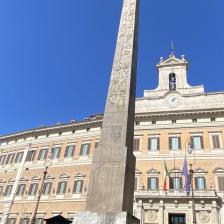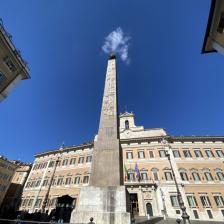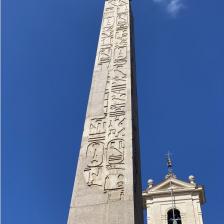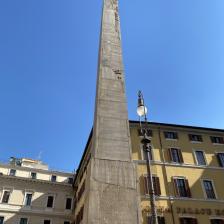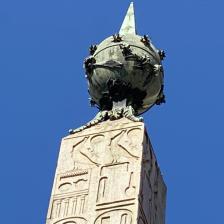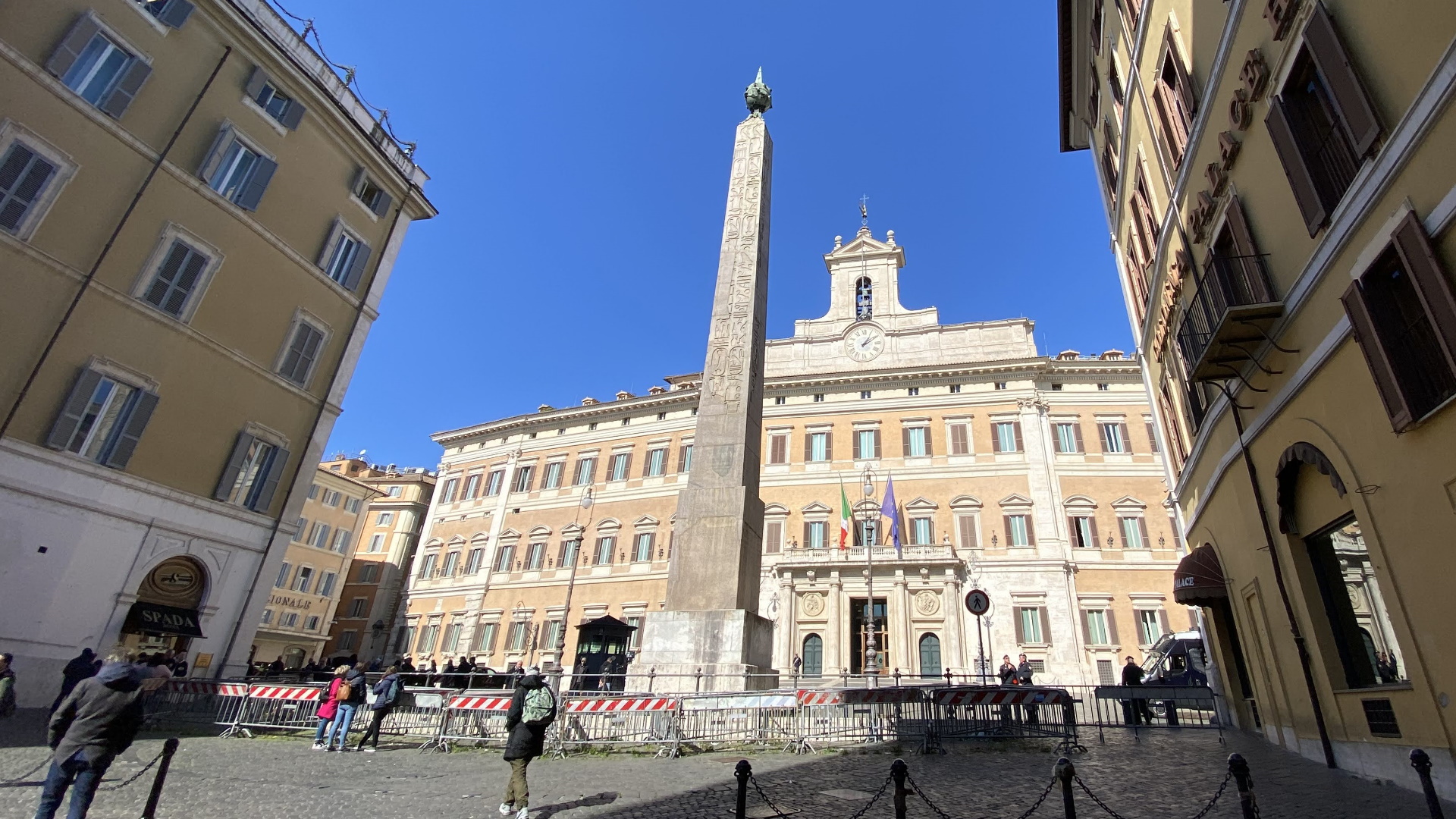
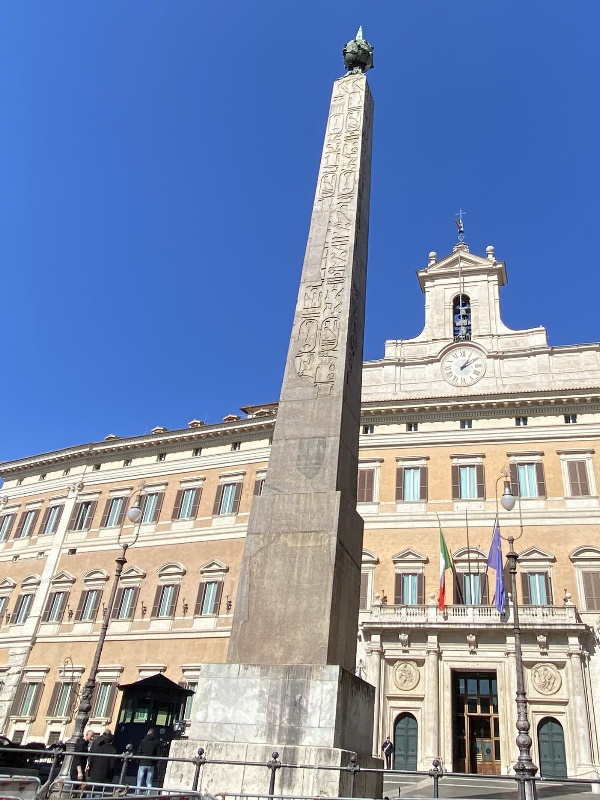
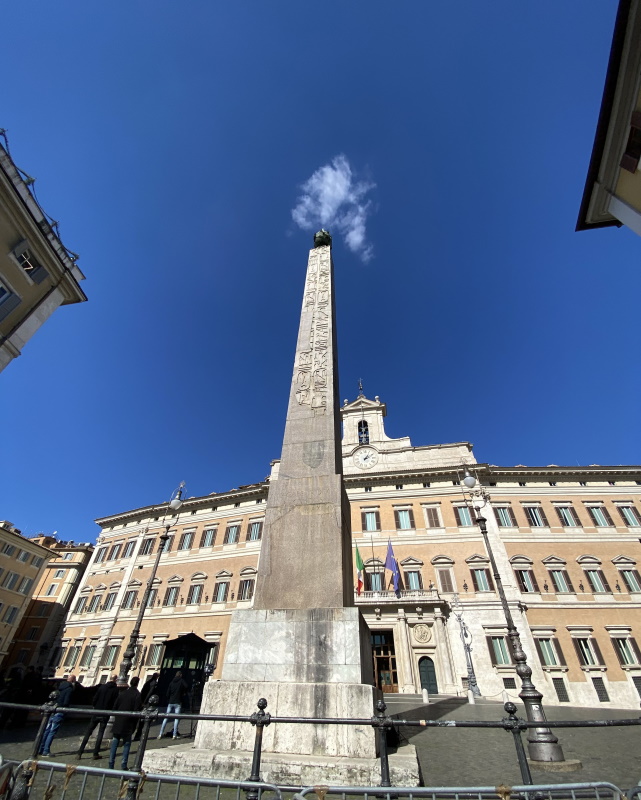
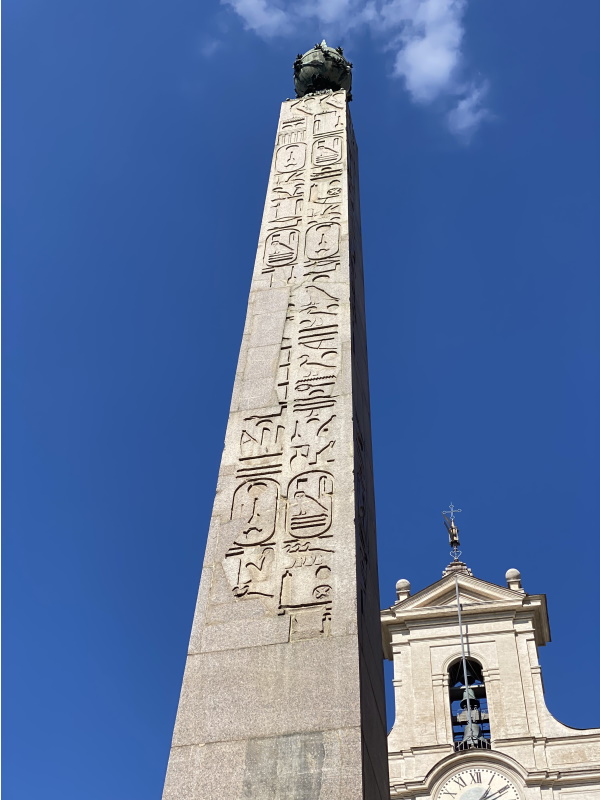
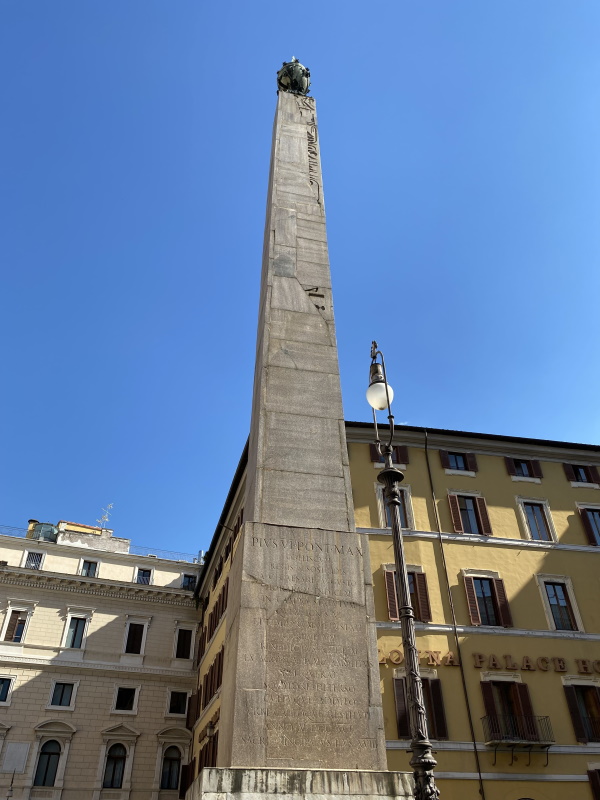

Located in Piazza di Monte Citorio, in front of the building that houses the Chamber of Deputies of the Italian Republic, the Obelisk Campense, with the one in Piazza della Minerva, dates back to the Saitic Dynasty (XXVI), which goes from 672 to 525 BC.
Pharaoh Psamtik II ordered its erection in the original site of Heliopolis. It is carved in red granite and has a height of 21.79 meters, 33.97 meters with the base and the globe. It was brought to Rome by Augustus in 10 BC. with the Flaminian Obelisk and erected in the Campus Martius on a pedestal with a dedication to the emperor: "IMP CAES DIVI FIL AUGUSTUS PONTIFEX MAXIMUS IMP XII COS XI TRIB POT XIV AEGYPTO IN POTESTATEM POPULI ROMANI REDACTA SOLI DONUM DEDIT" ("Emperor Augustus, son of divine Caesar, pontifex Maximus, proclaimed emperor for the twelfth time, consul eleven times, who held tribunician power fourteen times, having led Egypt into the power of the Roman people, gave as a gift to the sun").
A mosaic depicting the winds, the signs of the zodiac, and a sundial decorated the area around the obelisk. It probably was the gnomon of the sundial, which is the part that casts the shadow.
It stood in its position until the 10th or 11th century, but perhaps because of land subsidence due to earthquakes or floods, it collapsed and was gradually buried, and its traces were lost.
However, its astronomical function aroused great interest for scholars and collectors who found it after several fruitless attempts. In 1748, Pope Benedict XIV ordered its extraction.
It turned out to be broken into five pieces and damaged by fire. Engineer Antonio Zabaglia, an uncultured person with a remarkable talent for mechanical works, took care of the extraction and restoration. Another 40 years had to pass until 1792, when the obelisk assumed its current position, thanks to architect Giovanni Antinori.
In 1998, Piazza di Monte Citorio was restored. The old zodiacal elements and the lines recreated gave back to the obelisk its function as a sundial gnomon.
Due to the poor preservation, many of the inscriptions went lost. Only a list with the pharaoh's names and an interpretation of natural phenomena according to the philosophy of the Egyptians remains.
The Flaminio Obelisk

 Condividi
Condividi
Obelisk of the Minerva (Minerveo)
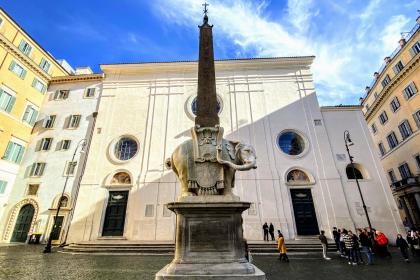
 Condividi
Condividi
L’Obelisco della Minerva: la storia curiosa di un elefante di pietra al centro dell’incantevole piazza della Minerva.
Monte Citorio Square

 Condividi
Condividi
Information
 Condividi
Condividi
Location
To find out about all accessibility services, visit the Rome accessible section.












































